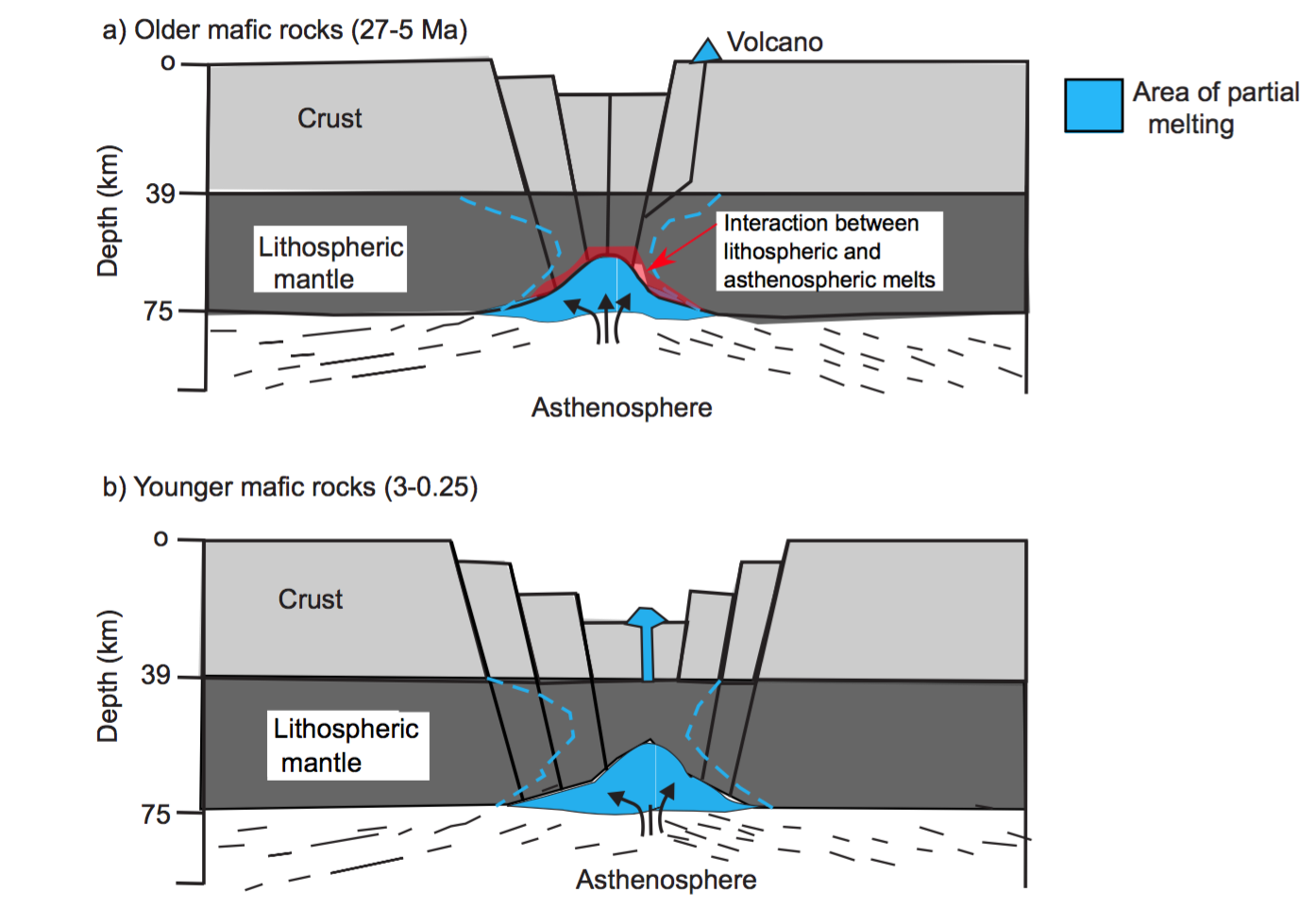Rift to drift: witness the breakup of Africa
The Ethiopian Rift is the extensional basin developed on African continent during the last 30 million years. Seismic studies reveal that the crust beneath the current rift axis is predominantly mafic materials, and akin to the oceanic region. Such feature suggests that the eastern part of Africa will eventually drift apart and becomes ocean.
The use of temporal geochemical variations of Ethiopian volcanic rocks has lagged behind, despite that it would provide important constraints on thermal and compositional evolution of crust and mantle beneath the incipient continental rift. In this study, we present ages and geochemical compositions of mafic lavas, collected from Main Ethiopian Rift (MER), to document the evolution of this rift. Melting condition, estimated from rare-earth element enrichments in mafic lavas, has been constant during the last 27 million years. This result can be accounted for by late Cenozoic MER magmatism driven primarily by plate divergence, as that occurs in mid-ocean ridge. We also reveal that the contribution of lithosphere to MER magmas decreases with time, probably due to continuous thermal erosion and dehydration of lithosphere.

References:
- Feyissa, D. H., Shinjo, R., Kitagawa, H., Meshesha, D. Nakamura, E., Petrologic and geochemical characterisation of rift-related magmatism at the northernmost Main Ethiopian Rift: Implications for plume-lithosphere interaction and the evolution of rift mantle sources, Lithos, 282 –283, 240-261, 10.1016/j.lithos.2017.03.011, dream/20171127135402-362931, 2017.